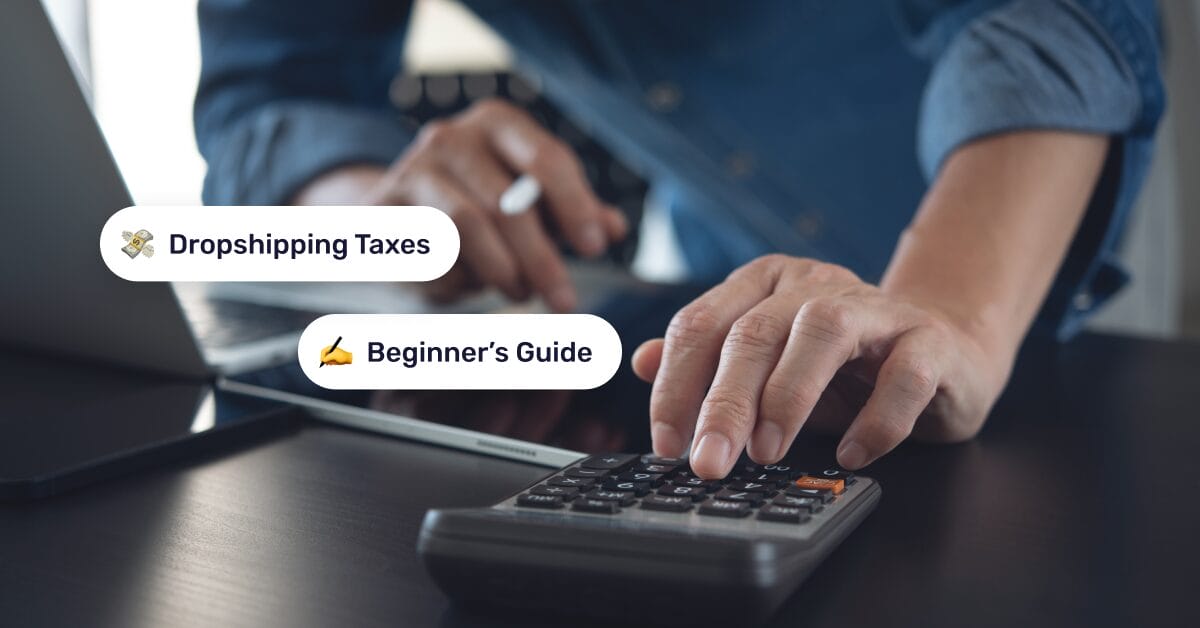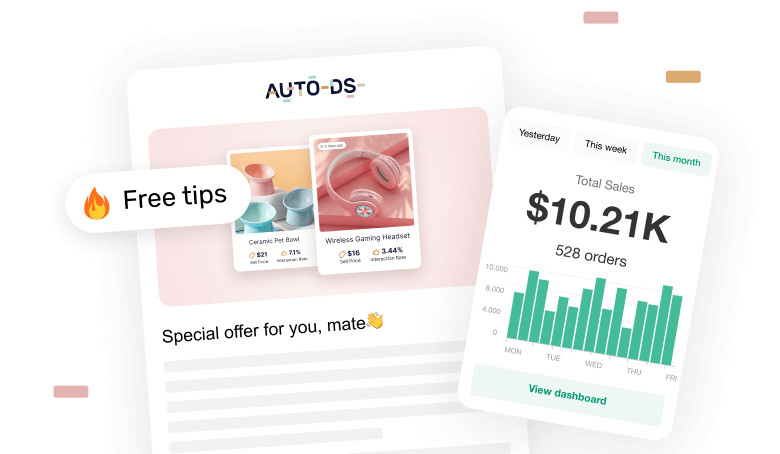The Honest Truth About Dropshipping Taxes
Taxes. Just the word makes most dropshippers want to hit “skip” faster than an unskippable YouTube ad. But unlike ads, you can’t scroll past them—ignoring dropshipping taxes can cost you way more than your monthly ad spend.
Here’s the good news: you don’t need to be an accountant or a finance wizard to stay compliant. You just need to understand the basics and follow the right steps. Think of it like IKEA furniture: overwhelming at first, but with the right manual (and no missing screws), you’ll get it done without breaking a sweat.
Luckily, AutoDS has specific tools to track costs and profits, so calculating dropshipping taxes feels less like a mystery and more like math you can actually handle.
Taxes are part of every dropshipping business, no matter how small.
Registering your business can unlock benefits like tax deductions, liability protection, and long-term credibility.
Keeping detailed records of sales, expenses, and refunds makes filing taxes smoother and helps you spot real profits.
Deadlines matter—late filings can mean penalties, so treat tax dates like delivery dates: miss them and it costs you
AutoDS tracks profits, expenses, and fees in real time, so staying tax compliant feels manageable, not overwhelming.
What Are The Dropshipping Taxes?
Let’s clear the fog. When you run a dropshipping business, there are a few types of taxes you’ll bump into. Here are the main ones:
- Income Tax. This is the tax you pay on your business profits. In the U.S., for example, dropshippers need to report profits as business income, whether they’re a sole proprietor, LLC, or corporation. Your exact rate depends on your business structure and total income.
- Sales Tax (U.S.). Sales tax applies when you sell physical products to customers in states that require it. Thanks to the 2018 South Dakota v. Wayfair decision, states can now require online sellers (yes, even dropshippers) to collect and remit sales tax if they meet “economic nexus” thresholds—usually $100,000 in sales or 200 transactions in that state.
- VAT (Value-Added Tax) in Europe. If you’re selling to EU customers, VAT applies. The current standard VAT rate across EU countries ranges from 17% to 27% depending on the country (European Commission, 2024). You’ll often need to register for VAT if your sales exceed certain thresholds or if you store inventory in that region.
- Import Duties and Tariffs. Import Duties & De Minimis (U.S.): If you source from abroad, factor in import duties. The long-standing “under-$800” de minimis break has changed: effective May 2, 2025, duty-free treatment ended for China/Hong Kong parcels; and by Aug 29, 2025, officials said the global under-$800 exemption would end after a transition—meaning low-value parcels can be dutiable again. Always check the latest CBP/carrier guidance.
- Source Taxes. In some cases, platforms or payment providers deduct around 10% at the source before you ever see the payout, and that can eat into profits if you don’t plan for it. To simplify this process, AutoDS’s profit-margin automation lets you automatically factor in source taxes (and other fees) so you price products more accurately without the guesswork.
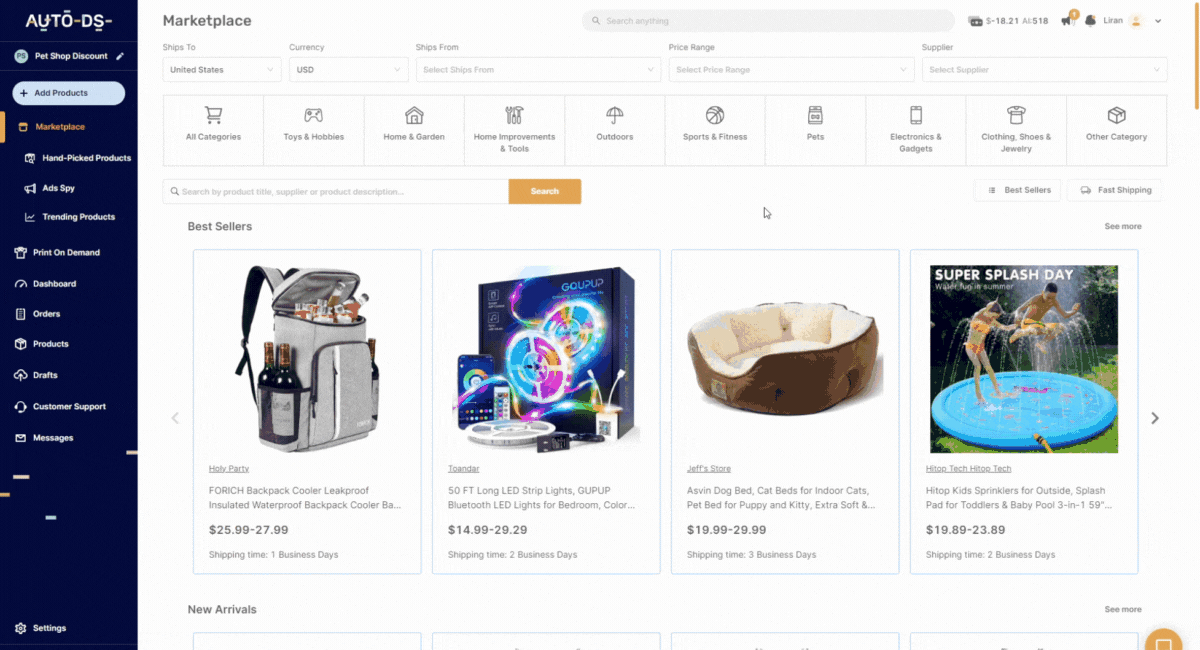
Tired of wasting hours tracking expenses? AutoDS automatically logs costs, shipping fees, and profits so you can focus on selling. Start your $1 trial today
How To Handle Dropshipping Taxes Step by Step
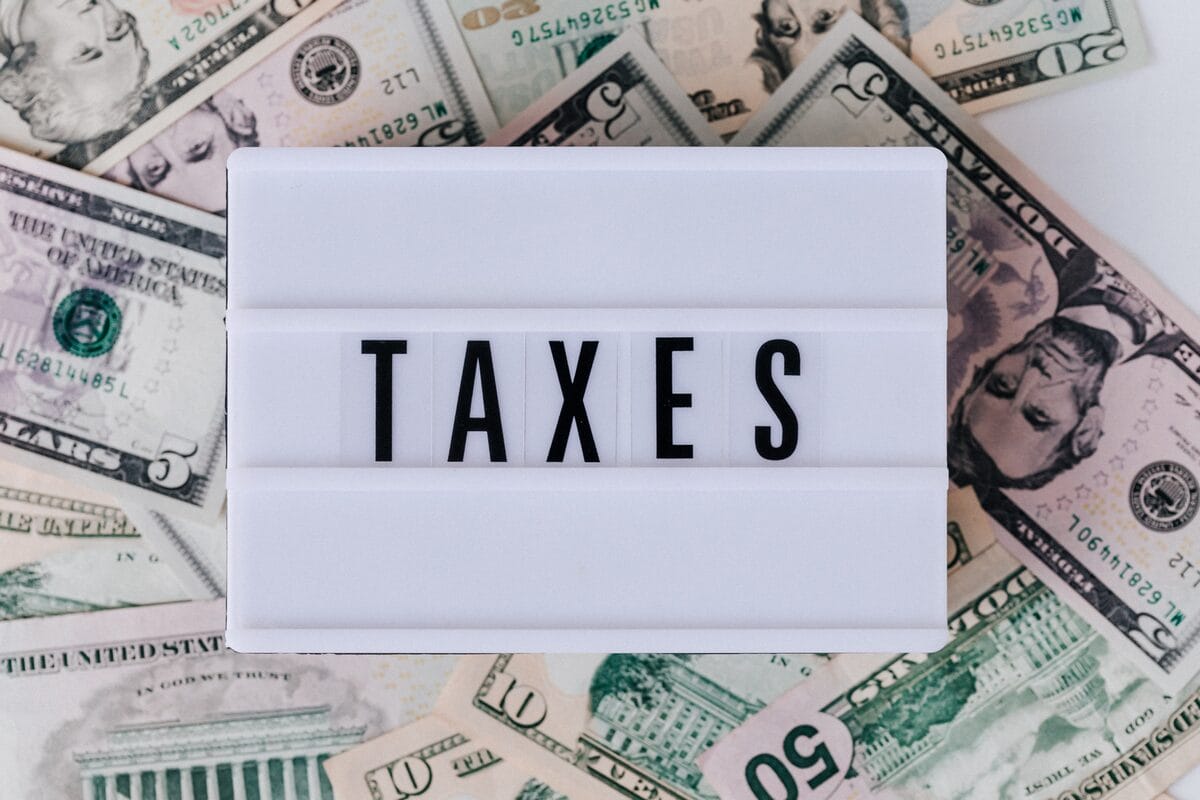
Taxes may feel like the boring B-plot in your dropshipping story, but trust me, they’re a subplot you can’t skip. The good news? Handling them is just about knowing what applies to you and tackling things one step at a time.
Step 1: Understand Your Tax Obligations
First things first: know what you’re dealing with.
Income tax is what you pay on your profits. It’s tied to where you live and run your business. If you’re based in the U.S., you’ll report your dropshipping income on your federal (and maybe state) tax return. If you’re in the UK, it’s part of your self-assessment.
Sales tax or VAT depends on where your customers are. U.S. sellers collect sales tax in states where they have “nexus.” EU sellers (or anyone selling to EU customers) may need to charge VAT once they hit certain thresholds.
Think of it this way: income tax follows you, sales tax/VAT follows your customers. The best part? AutoDS helps dropshippers separate profit data from order data, so it’s easier to figure out what’s taxable.
🆕 Beginner’s Tip: Start a small “tax buffer” account and move 10–20% of every sale into it. That way, when tax season comes, you’ve already saved what you owe.
Step 2: Register Your Business (If Required)
Not every dropshipper kicks things off with a formal business structure, and that’s okay. Plenty of sellers test the waters as a sole proprietor because it’s the simplest option: you report profits on your personal tax return, and there’s very little paperwork involved. The trade-off, though, is that you’re personally liable for any debts or legal issues, which can feel risky as your store grows.
That’s where registering a business—like forming an LLC or a corporation—starts to make sense. An LLC gives you liability protection (your personal assets stay separate from your business), adds credibility when working with suppliers or banks, and can unlock tax advantages like being able to deduct more expenses. Corporations can go even further, though they come with extra complexity.
Another underrated perk of registration? It makes financial logistics smoother. Payment processors like PayPal and Stripe, or even business bank accounts, often prefer official paperwork. So while you may not need to register on day one, setting it up early can save headaches later and put your dropshipping business on a stronger, more professional foundation.
Step 3: Track Your Income & Expenses
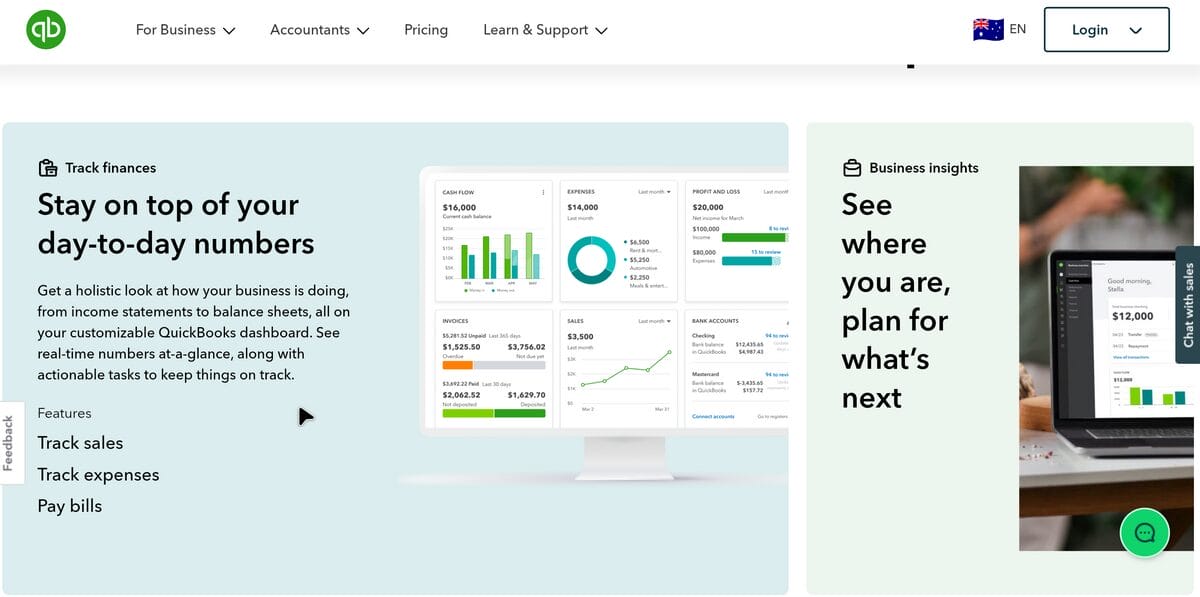
If taxes are the exam, your records are the study notes—and yes, you’ll want to keep them neat. The golden rule here is: track everything. That means sales, refunds, marketplace fees, ad spend, product costs, even that Canva Pro subscription you use for your store graphics.
Why? Because detailed records don’t just make tax season painless—they also show you if your business is actually profitable. Without them, you’re basically flying blind.
You’ve got options for how to track:
- Spreadsheets – Simple and free, but manual. Great if you’re just starting out.
- Accounting software (like QuickBooks or Xero) – Automates the boring stuff and integrates with selling platforms.
- Professional accountants – Pricier, but they catch deductions and mistakes you might miss.
Step 4: Collect and Remit Sales Tax / VAT
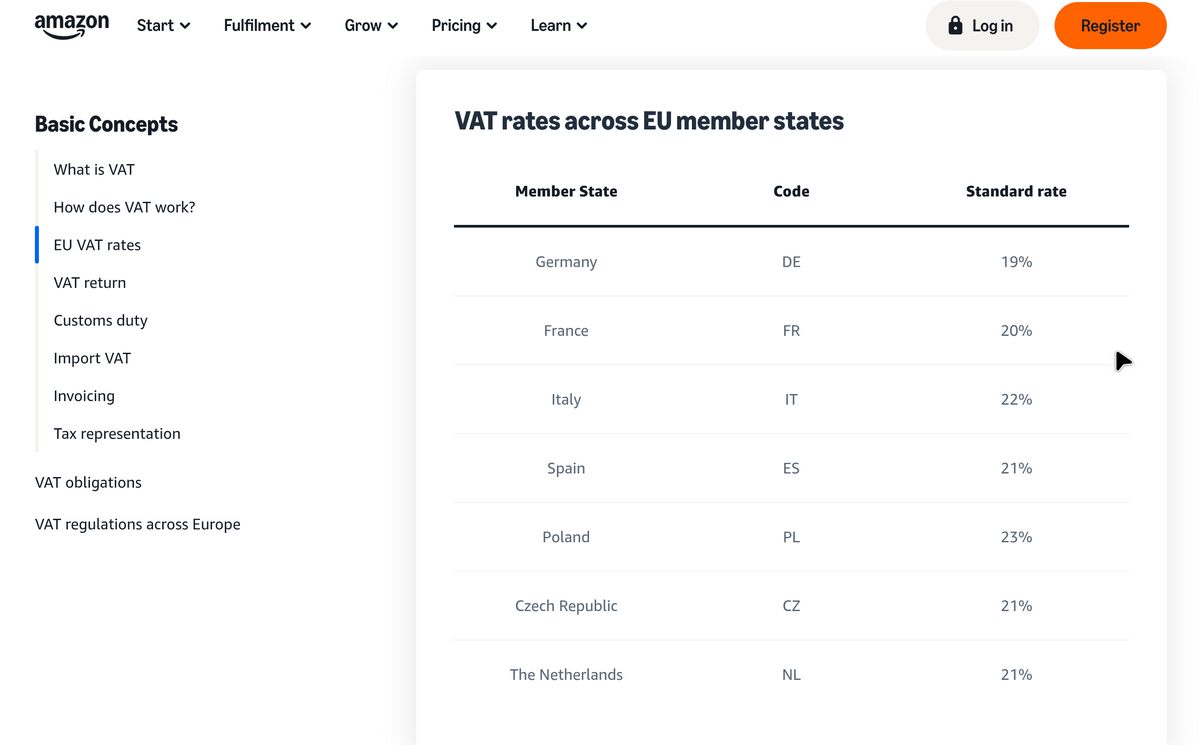
This is where things start to feel real, because it’s not just about knowing taxes exist, it’s about actually charging and paying them.
- In the U.S.: You’ll hear the word nexus a lot. Nexus basically means “do you have enough of a presence in this state to owe sales tax here?” After the 2018 South Dakota v. Wayfair ruling, even online sellers without a physical presence can be on the hook. Most states set the bar at $100,000 in sales or 200 transactions per year. Hit that, and congrats—you’re officially collecting sales tax.
- In the EU and UK: It’s all about VAT thresholds. Each country sets its own level. For example, in the UK, once your taxable turnover passes £90,000 in 12 months, you must register for VAT (HMRC, 2024). In the EU, thresholds vary, but once exceeded, you’ll need to charge VAT at checkout.
You’re required to register with the tax authority if your sales or transactions in a given region pass the threshold (state revenue department in the U.S., HMRC in the UK, etc.) and start collecting tax from customers.
Marketplace rules to know:
- Amazon, eBay, and Etsy: These marketplaces often handle VAT and sales tax collection for you. They’ll add it at checkout and remit it directly.
- Shopify and other independent stores: The responsibility is yours. You’ll need to set up tax settings inside your store dashboard to make sure customers are charged correctly.
In the U.S., facilitator laws generally make marketplaces collect/remit for marketplace sales; your Shopify/own-site sales remain your responsibility.
Step 5: File Your Taxes Correctly
Collecting taxes is only half the story. The other half is actually filing them. This is where your tidy records (remember Step 3?) pay off.
- Income tax: Every year, you’ll need to report your dropshipping profits on your annual income tax return. Whether you’re in the U.S., UK, or elsewhere, this is your “big picture” filing that covers everything you earned (and spent) in the year.
- Sales tax / VAT: Unlike income tax, these don’t wait until year-end. Depending on your region, you may need to file monthly or quarterly returns, reporting the tax you collected and remitting it to the government. For example, many U.S. states expect sales tax returns every month, while the UK usually works on quarterly VAT returns.
Technically, this is not mandatory, but it is the responsible thing to do (also, it’s mind-freeing). Miss a deadline and you could face penalties, interest, or even lose the right to operate in that region. Think of deadlines like customer delivery dates: keep them, and life is smooth. Miss them, and the complaints pile up fast.
Step 6: Consider Hiring a Tax Professional
Here’s the truth: you can handle taxes on your own, but that doesn’t mean you always should. A good tax professional can save you hours of Googling, keep you compliant, and sometimes even reduce your tax bill with deductions you didn’t know existed.
For international sellers, this help is golden. Navigating multiple tax systems (say, U.S. sales tax and EU VAT) can feel like switching between Netflix, Disney+, and Prime with three remotes. A pro knows how to keep all those channels in sync.
Benefits of bringing in a tax professional:
- Less stress (you focus on growing your store, not decoding tax forms).
- Potential savings (they spot deductions you’d miss).
- Fewer mistakes (and fewer penalties).
Best Practices for Staying Compliant
Let’s be honest: nobody launches a dropshipping store because they dream of filing tax returns. But staying compliant is what keeps your business alive (and your stress levels low). The good news? With a few smart habits, you can handle taxes without turning into a full-time accountant.
📢 Marketing Tip: Be upfront about taxes in your store FAQ (“VAT included in price” or “Sales tax calculated at checkout”). Customers love transparency, and it reduces abandoned carts.
Separate Business & Personal Accounts
Mixing business and personal money is like mixing laundry: eventually, something turns pink that wasn’t supposed to.
It’s crucial to open a separate business bank account (and PayPal or Stripe if you’re using them for sales). It makes tracking income, expenses, and deductions way easier. Plus, if you ever get audited, you’ll thank yourself for keeping things clean.
Save Receipts and Invoices
Your receipts are more than just digital clutter—they’re proof. Supplier invoices, ad receipts, and your monthly Shopify subscription can count as deductible expenses.
A simple system (Google Drive folders, Dropbox, or accounting software) keeps everything safe and searchable. Imagine your future self at tax time, sipping coffee instead of tearing the house apart looking for that one Facebook Ads invoice.
Automate Tax Collection Where Possible
Manually calculating and charging tax on every order? Hard pass. Most platforms let you turn on automatic tax collection. On Shopify, for instance, you can enable tax settings per region. Marketplaces like eBay and Amazon often handle it for you. Set it once, let automation do the rest.
💡 Pro Tip: Leverage AutoDS for numbers, too. It tracks sales and syncs data across platforms, so when tax time comes, your numbers are already lined up.
Stay Updated on Changing Laws
Tax laws change. Sometimes quietly, sometimes not so much. The U.S. Wayfair ruling in 2018 changed sales tax rules overnight. In 2025, the De Minimis loophole changed a few times and had a severe impact on duties on imports from China. The point is: what’s true today may shift tomorrow.
How to stay ahead:
- Follow official sources (IRS, HMRC, EU Commission).
- Subscribe to e-commerce or tax newsletters.
- Check in with your accountant once in a while, even if you usually DIY.
Frequently Asked Questions
Do I need to pay taxes if I just started dropshipping?
Yes. Even if you’ve just started, any dropshipping profit counts as taxable income. Whether it’s $100 or $10,000, tax authorities expect you to report it. AutoDS tracks profits from day one, so you know exactly what needs to be declared.
How much tax do I pay on dropshipping income?
The amount of tax you’ll pay depends on your country’s income tax rates and your business setup—sole proprietors typically pay personal income tax, while LLCs or corporations may fall under different rules. Keeping detailed profit records is key, and AutoDS makes it easier by providing real-time profit calculations that show what’s actually taxable.
Do I charge sales tax to international customers?
In most cases, no. U.S. sellers only collect sales tax from customers in states where they have nexus, while EU and UK sellers charge VAT once they pass local thresholds. International customers outside those jurisdictions usually don’t pay additional tax at checkout, but you must configure your store correctly to avoid compliance issues.
What happens if I don’t pay dropshipping taxes?
If you don’t pay dropshipping taxes, penalties, late fees, and even restrictions on your selling rights can pile up quickly. Think of it like ignoring supplier invoices—eventually, it comes back to bite you, which is why staying compliant is always cheaper and safer in the long run.
Can I write off business expenses (ads, tools, subscriptions)?
Yes, you can usually write off business expenses like ad spend, Shopify fees, and dropshipping automation tools as deductions, lowering your taxable income. AutoDS tracks expenses such as subscriptions, shipping fees, and product costs automatically, making it easier to maximize deductions and save money during tax season.
Do platforms like Shopify or eBay collect tax for me?
On Shopify, you’re responsible for enabling and managing tax collection settings, but marketplaces like Amazon, eBay, and Etsy often collect and remit VAT or sales tax on your behalf depending on the region. Always check each platform’s tax policy so you know what’s being handled for you and what isn’t.
Do I need a business license to start paying taxes?
Not necessarily—many dropshippers pay taxes as sole proprietors without registering a formal business. However, forming an LLC or corporation can bring benefits like liability protection and potential tax advantages, and AutoDS supports both new sellers and registered businesses with the same automation tools.
Start Your Dropshipping Journey with AutoDS
Handling dropshipping taxes may sound intimidating, but once you break it down step by step, it’s more about consistency than complexity. From understanding income tax and sales tax/VAT rules to filing returns on time and keeping receipts, it all comes down to good habits.
And here’s the game-changer: AutoDS offers real-time profit tracking and automated expense management that make staying compliant far easier than doing it alone. By staying tax-smart, you can start building a solid foundation for long-term growth.
🚀 Ready to make taxes less of a headache? Start your AutoDS $1 trial today and see how automation takes the stress out of running your store.
For more dropshipping expert tips and tricks, check these out:






